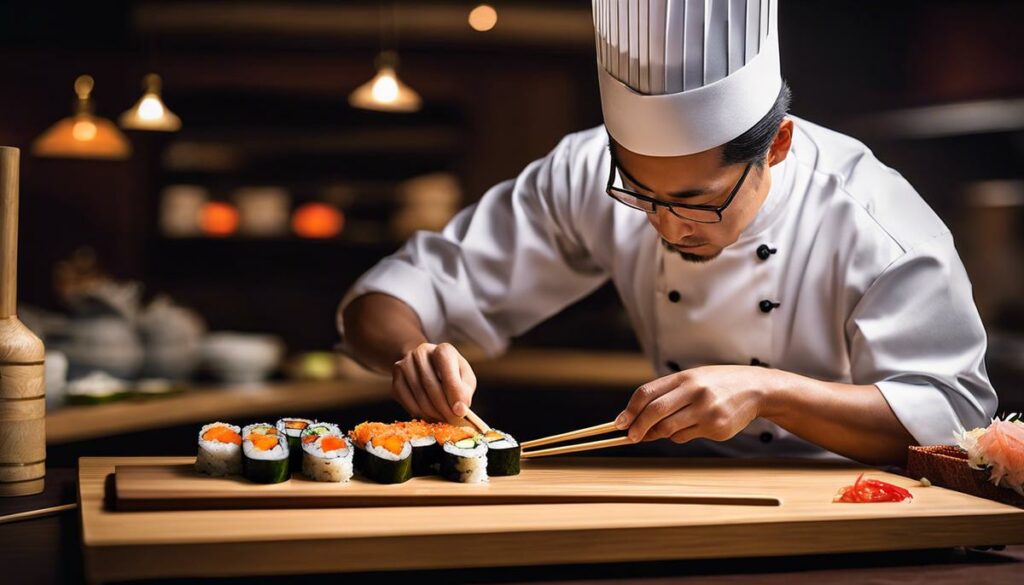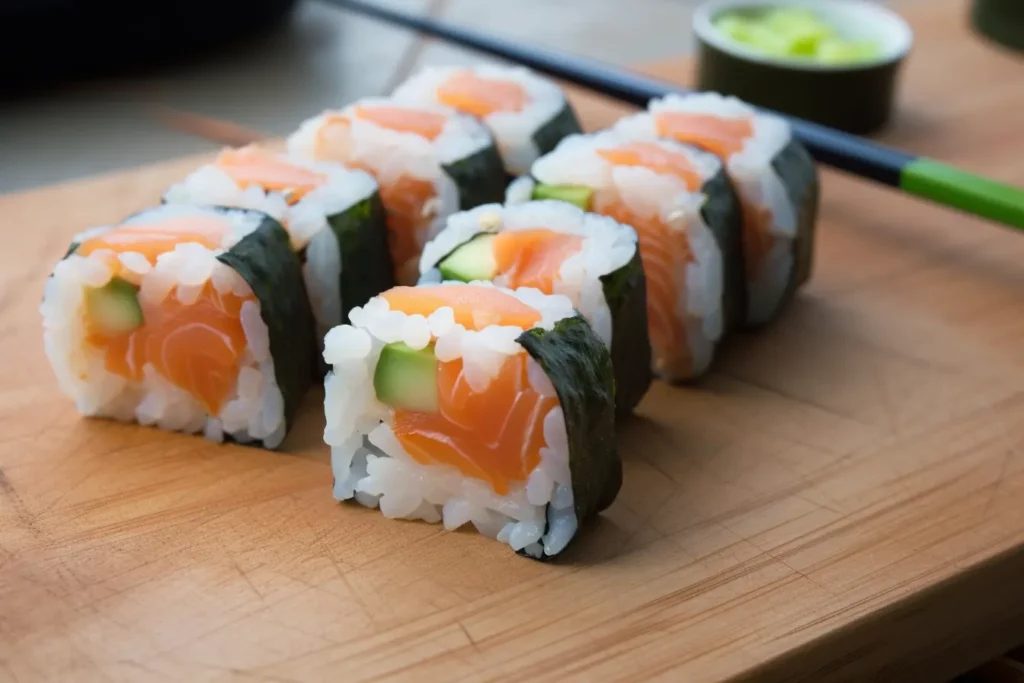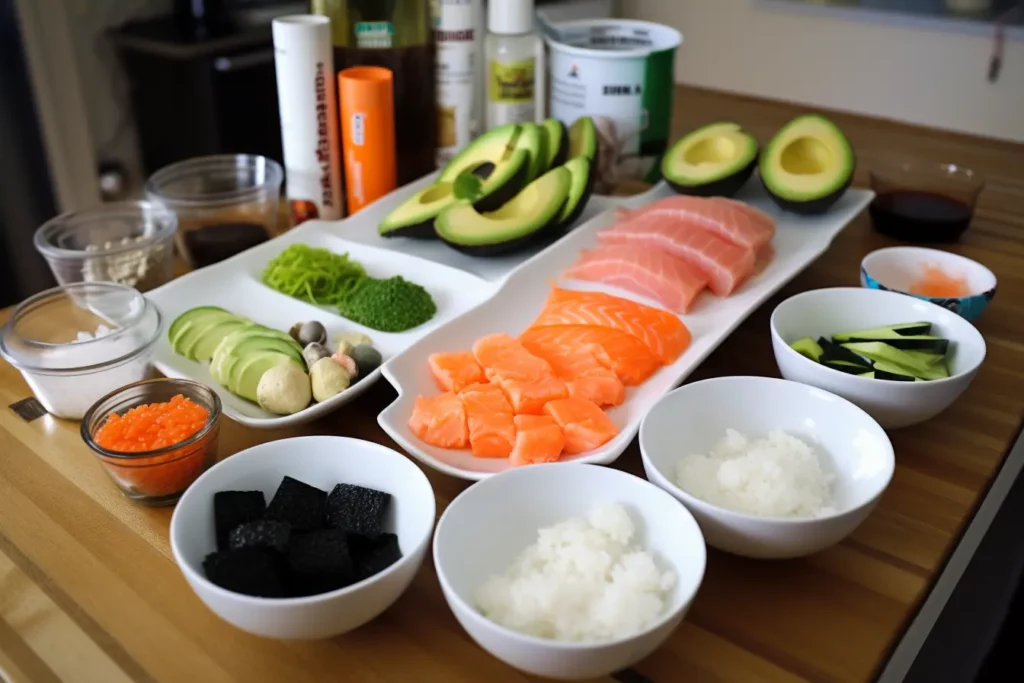Detailed, artful and ravishing in its simplicity and complexity at the same time, the art of sushi preparation goes far beyond the mere compilation of raw materials. In a world increasingly dominated by speed and convenience, sushi stands as a shining example of the craftsmanship and patience found in traditional Japanese gastronomy. Every bite of sushi is not only a treat for the palate, but also a visual and sensory delight that captures the essential spirit and philosophy of Japanese food culture.
The Art of Sushi Preparation
The high art of the sushi master defines the final product through a fusion of tradition, skill and creativity. The ultimate dream for lovers of aesthetics and fine dining!
A sushi master has years of training and decades of practice to perfect their skills. Every move is a ritual, every movement an expression of devotion to art. The skills of a sushi master are an important element in Japanese culture, and they extend to the final product in every way.
The first impression of a sushi dish comes from the presentation. Sushi should look seductive and inviting – a reminder that in Japanese culture, every detail counts. Beauty heralds good taste, and a sushi master makes sure that his life’s work keeps that promise. The colors of the ingredients presented reflect the natural seasons while celebrating the uniqueness of each ingredient.
Taste is the true test of the sushi master’s craftsmanship. A sushi master strives for the perfect balance between rice and toppings. He knows the secret to bringing out the subtle flavours of each ingredient and creating a harmonious whole.
And last but not least: feeling. The experience of eating sushi is deeply emotional. A sushi master touches the souls of his customers through his art by stimulating emotional connections and memories. Every nuance of taste, texture and fragrance is designed to evoke emotions that make the culinary experience unique.
At the end of the day, the skill of the sushi master is not just about the preparation of the food. It represents his passion, his skills and his vision. It is a dance between tradition and modernity, between simplicity and complexity. And that’s what makes the final product so irresistibly seductive.
It can be said that the real art of the sushi master lies in his ability to turn the kitchen into a stage and present his masterpiece to the world. A delight for the eyes, palate and soul. It’s about more than just food – it’s about a holistic, sensual experience that is remembered and wants to be experienced again and again. All you have to do is sit down and enjoy the show! This is how the craftsmanship of a sushi master defines the final product.
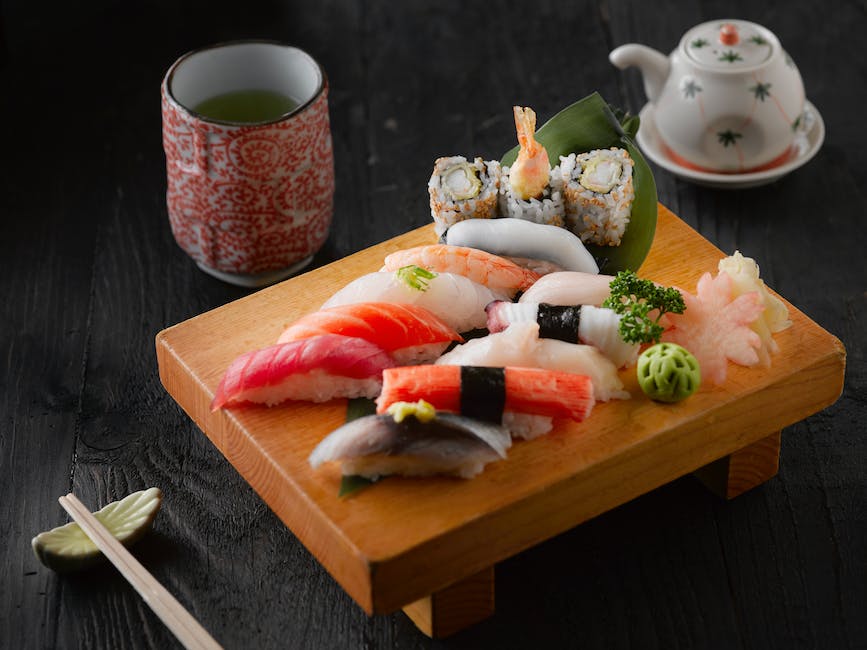
Aesthetic presentation of sushi
The Perception of Aesthetics in Sushi: A Feast for the Senses
If you love sushi, you’ll agree that it’s not just about the taste. It’s more – it’s a work of art, an experience, a carefully curated performance of visual and gastronomic delights. Sushi is not only a delight for the palate, but also an aesthetic feast for the eyes. Behind the artful arrangement of sushi is a deep awareness of aesthetics that plays a crucial role in the creation of this iconic dish.
The appeal of sushi lies in its simplicity and restraint, which makes it so appealing in terms of appearance and taste. This definition of aesthetics expresses a respect for the originality of ingredients and the harmonious balance of its components. First and foremost is the considerate depiction of raw fish, which impresses in both color and texture and is contrasted by the whitish sheen of the rice.
There’s no denying that color design is a crucial aspect of the aesthetic experience of a sushi dish. The careful selection and arrangement of colour-coordinated ingredients, such as raw fish, vegetables and rice, create an enticing image that pleases the eye and delights the sense of taste. The color palette is also understood as an indicator of the freshness and quality of the sushi, which is essential for the consumer.
But sushi goes beyond pure visual aesthetics, it celebrates the aesthetics of experience itself. The intimate interaction with the sushi master, who masterfully prepares and arranges the respective ingredients in front of the viewer’s eyes, fosters a deep respect and appreciation for the art and craft expressed in every bite.
In conclusion, sushi is much more than a simple snack due to its visual qualities. It is an aesthetic revelation that operates on many profound levels. It reminds us that complexity and beauty are often found in the simplicity and naturalness of life, and that aesthetics play an important role in our diet and well-being. So, the next time you visit your favorite sushi restaurant, let yourself be enchanted by surimi, maki, and nigiri and celebrate the art and aesthetics of this exquisite Japanese dish.
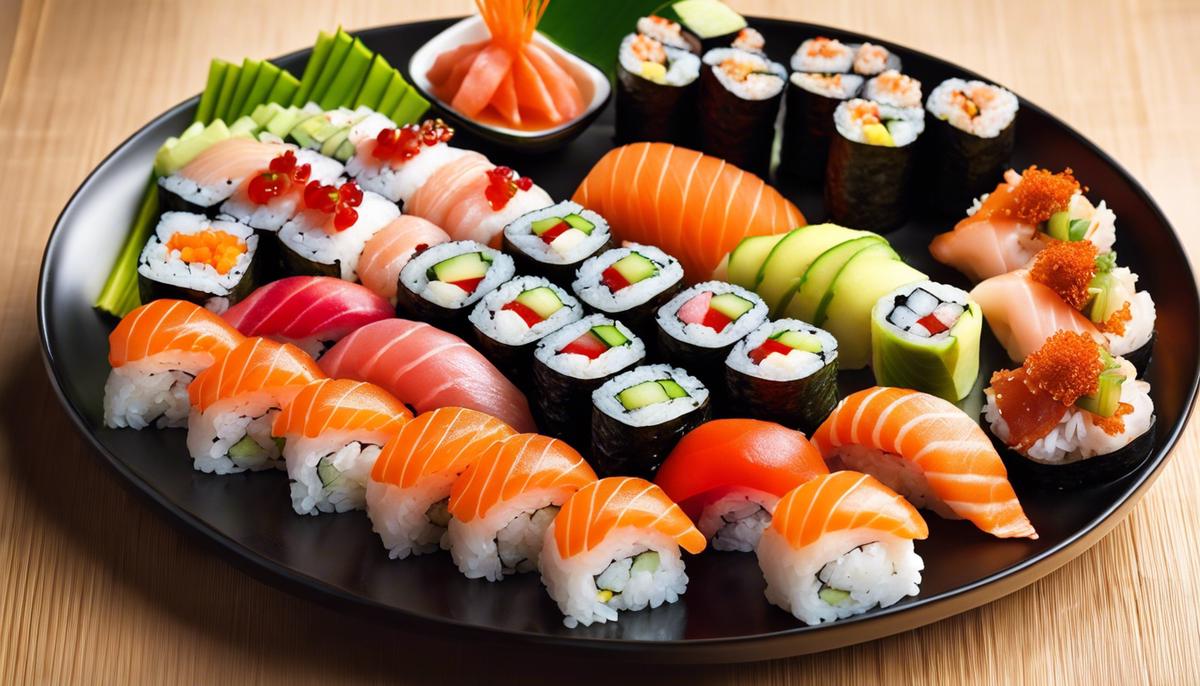
Emotional connection and social trends
Exploring the Broader Aesthetics of Sushi
The simplicity and restraint of sushi are crucial aesthetic aspects that often go unnoticed. Each piece of sushi is an exercise in artistic restraint and spatial harmony. The minimalist aesthetic of sushi, expressed through its nuances and detailed presentation, is an essential element of its appeal. It is this simplicity that gives sushi its visual clarity and purity, and it is this clarity that leaves a deep resonance and lasting impression.
Colors also play an important role in the representation and selection of sushi ingredients. The bright colors of fresh fish contrast with the mild white hue of sushi rice, creating a vibrant, almost painterly effect. The accentuation by the dark color of the seaweed leaves and the light green of the wasabi also creates a harmonious visual contrast and adds a touch of elegance to any sushi tray.
The visual aesthetics of sushi are inextricably linked to its gastronomic taste. The visual representation of sushi is designed to bring out its flavors and textures. The careful placement and proportioning of each ingredient, the contrast and complementarity of the colors, and the subtle balance of flavors work together to create a gastronomic experience that is as visually appealing as it is tasteful.
In this sensual experience, the sushi master, or Itamae, plays a crucial role. Through his masterful ability to carefully select, prepare, and present each ingredient, the sushi master transforms the sushi into a work of art. His maneuvers and movements are a kind of performance that serves to highlight the impeccable aesthetics and harmonious taste of sushi.
Aesthetics are an integral part of the sushi experience, as it evokes a deep sense of admiration and appreciation. It’s about appreciating the natural beauty and complexity of the ingredients, understanding the apparent simplicity of the presentation, and recognizing the creativity and mastery hidden within. It is the interplay of simplexity and beauty in the naturalness and simplicity of sushi that evokes a lifelong fascination and makes sushi more than a mere food trend. It is an aesthetic, a philosophy and a way of life.
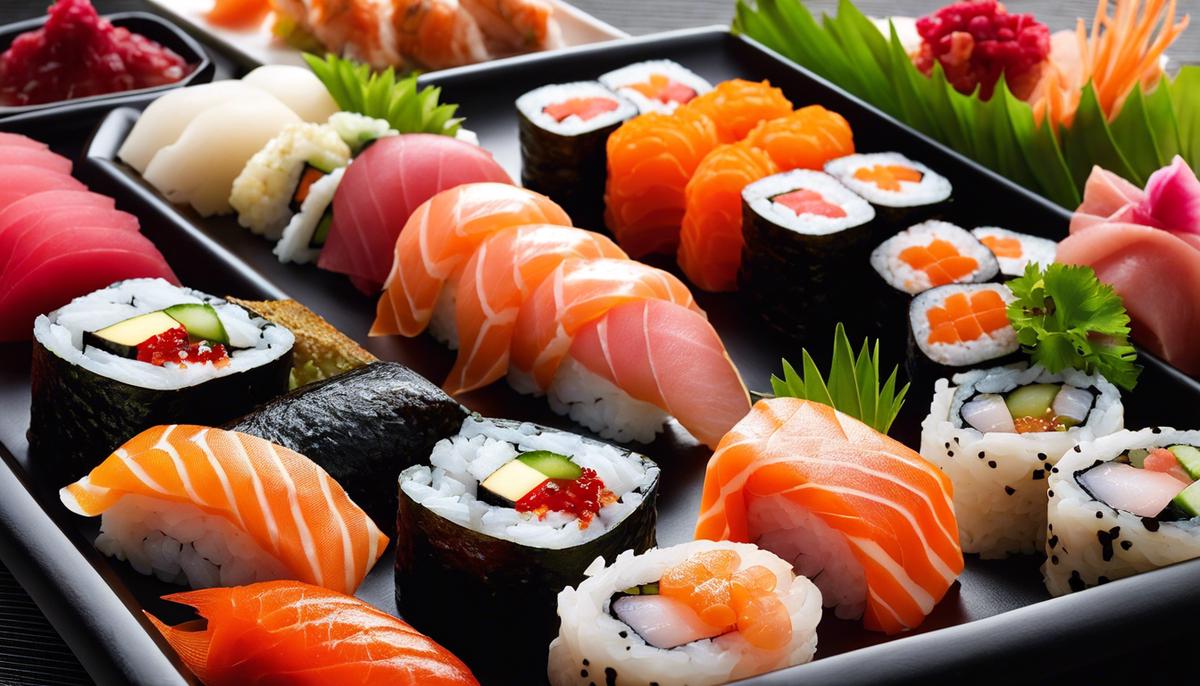
Sushi is not just a dish, but an experience that embraces all the senses. It’s about telling a story, making a connection, and making a lasting impression. It is the embodiment of the Japanese art of giving, attention to detail, and deep appreciation for fresh, natural ingredients. This combination of tradition, innovative spirit and an emotional connection to food has helped make sushi a global passion. Sushi challenges us to lose ourselves in the art of eating and to develop a deeper understanding and appreciation for the meticulous craftsmanship and craftsmanship that goes into every bite.
